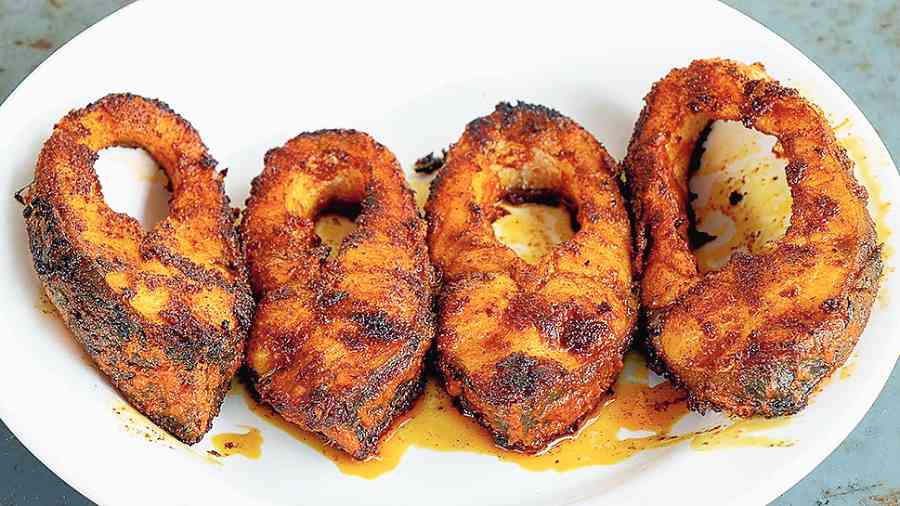For generations, Bengali kitchens have been witness to the mouth-watering art of “macher tel-e mach bhaja”, or cooking fish in its own oil. Now, artificial intelligence technology appears set to compete with mothers and chefs on the best way of frying fish.
Scientists at the National Institute of Technology (NIT), Durgapur, have trained an AI system called an artificial neural network (ANN), operating on a desktop computer, to determine the ideal conditions for frying catla in mustard oil.
Their research suggests that catla fried at a cooking temperature of about 119°C for six minutes on a non-stick frying pan with 40ml per kg oil-to-fish ratio will yield the best possible nutrient value.
“These numbers are not cast in stone — you could tweak them at will for either taste or lower oil content,” said Jitamanyu Chakrabarty, associate professor of chemistry at NIT Durgapur, who led the research that was funded by Bengal’s science and technology department.
The numbers could change with different fish or different oils, he said. But the findings could provide some guidance for home kitchens and the food industry against the backdrop of how quickly the nutrient value of fish degrades when fried.
The scientists used an ANN — a type of AI system widely used in image processing and facial recognition, stock market analysis and behaviour forecasting of social media users, among myriad other applications — to determine the ideal fish frying conditions.
Frying drastically lowers two key nutritional measures on which fish is typically assessed — its ratio of polyunsaturated fatty acids to saturated fatty acids (PUFA/SFA) and its index of atherogenicity (IA) that reflects its capacity to cause atherosclerosis, or coronary artery disease. The PUFA/SFA ratio should be high, while IA should be low.
Under certain frying conditions, for instance, lab experiments have shown that the PUFA/SFA ratio in catla can drop to 44 per cent of its levels in uncooked fish.
Research scholar Tithli Sadhu at the NIT, supervised by Chakrabarty, designed lab experiments to record the PUFA/SFA and IA levels after catla had been fried at temperatures between 140°C and 240°C, for 5 to 20 minutes, and with 25 to 100ml oil per kg fish.
The scientists changed each of the three cooking conditions stepwise — a 10°C increase in temperature, a three-minute increase in frying time, and a 15ml addition of oil per kg fish — measuring the PUFA/SFA and IA levels with each such combination of changes.
“We fried fresh fish at 84 various combinations of temperature, frying duration, and oil-to-fish ratio,” said Sadhu, now an assistant professor of biochemistry in the school of agriculture at SR University, Hanumakonda, Telangana.
The observations from those experiments served as the input training dataset for the ANN, whose task was to determine how different cooking conditions influenced the nutrient content of the fish and recommend an optimised, or ideal, set of cooking conditions.
The scientists collaborated with Sandip Lahiri, an associate professor of chemical engineering at the NIT, who worked on the ANN software and the computer simulations of the frying conditions.
The ANN suggested a cooking temperature of 118.92°C for 6.06 minutes in 40ml oil per kg fish. The NIT researchers have published their findings in the Journal of Food Processing and Preservation and Environmental Science and Pollution Research.
“We put fresh fish into the oil — salt and pepper seasoning is unlikely to change the fatty acid profile, but the ideal cooking conditions could change if we fry marinated fish, especially if marinated in a yoghurt base because of fat in the yoghurt,” Sadhu said.
Chakrabarty said the research illustrates how ANNs could be deployed for food processing applications, helping reduce frying time and the wastage of cooking oil.











